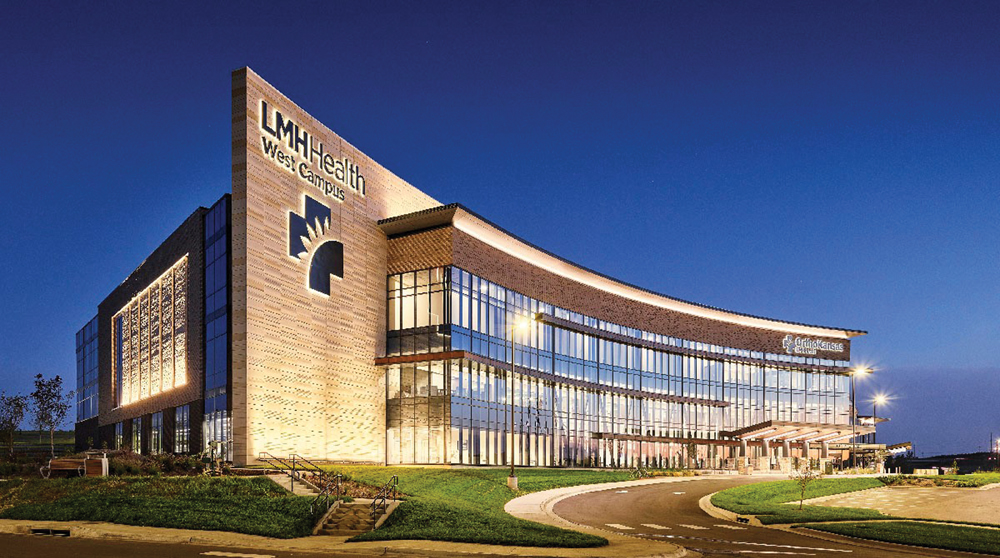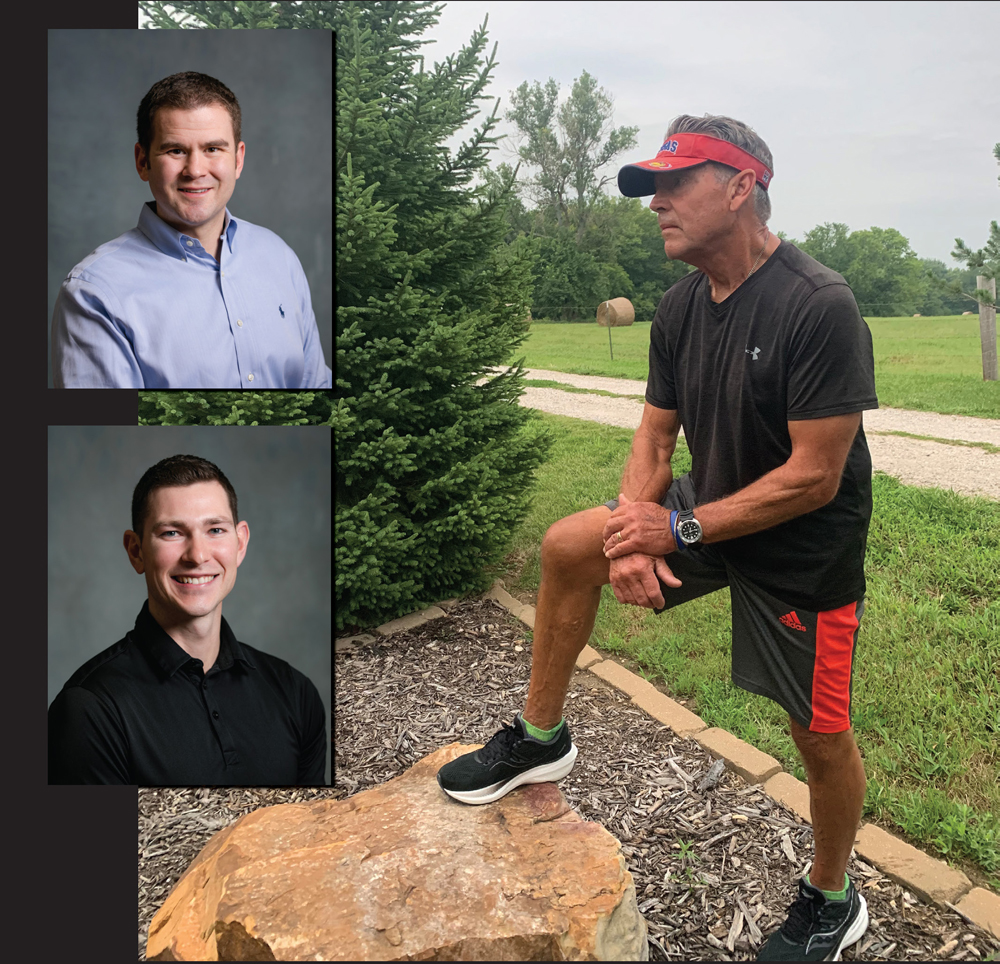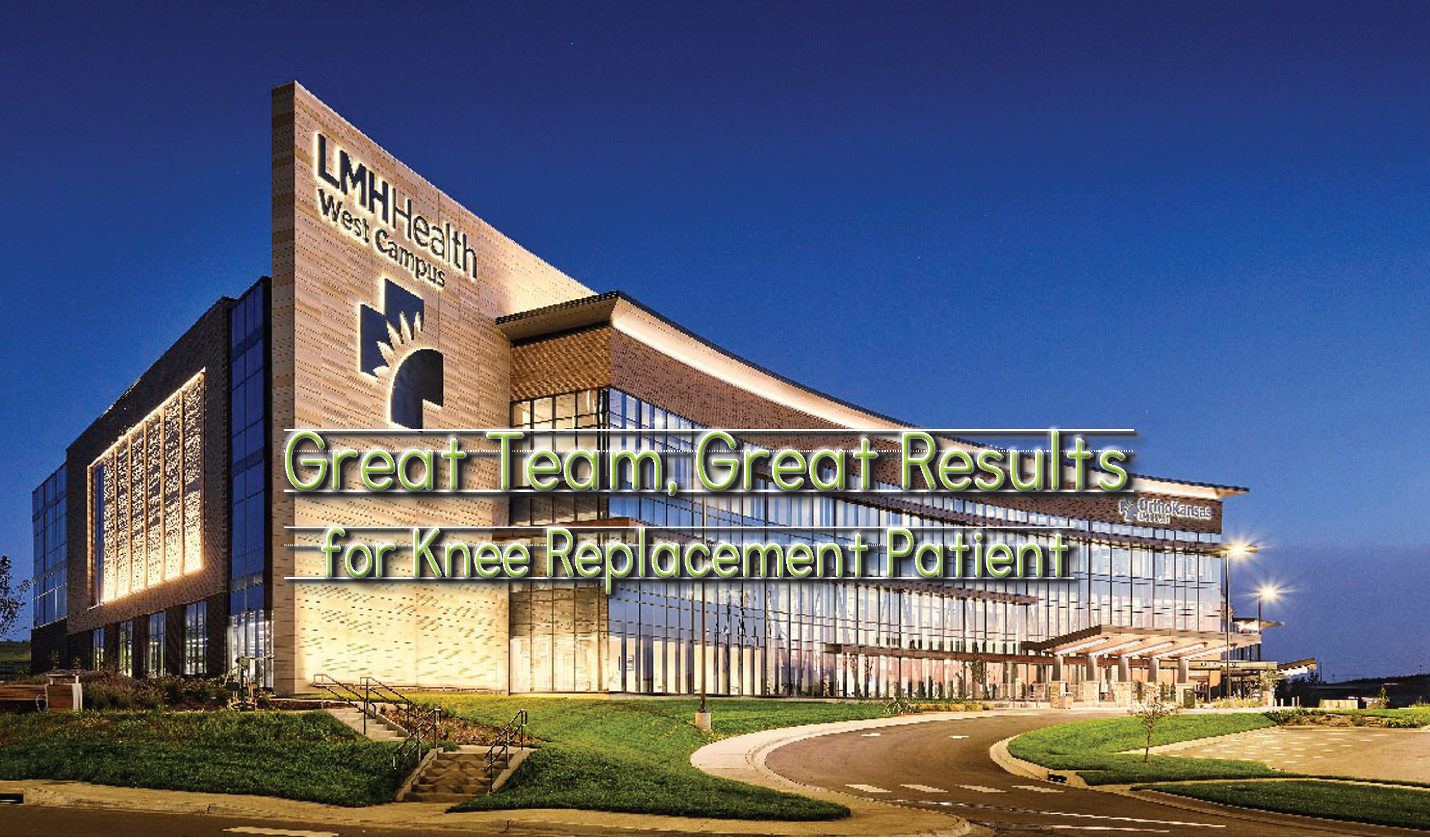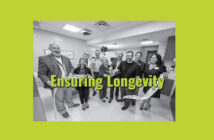| story by Autumn Bishop | |
| photos courtesy | LMH Health |
| OPEN A PDF OF THE ARTICLE |
Getting great results for knee replacement patient.

Great Team
For more than 45 years, Scot Hoffman has been in love with running. One of his favorite things to do is to get up in the morning and run as far as he can. That has led Hoffman to compete in races from 5Ks to marathons, but the distance he’s most comfortable with is the half marathon.
“The half is my specialty,” he said. “The Hospital Hill Run in Kansas City each spring was my favorite and I’ve done seven or eight of those. My wife, Donna, and I would take my kids to stay at Crown Center and I’d get up the next morning for the race. We’d do lots of races together.”
All of the training miles that Hoffman put in – up to 40 or 50 a week – wore on his knees and “beat them to a pulp,” so it wasn’t a surprise when the pain began. He’d put up with the pain for several years before turning to orthopedic surgeon Adam Goodyear, MD, and the team at OrthoKansas for help.
“Scot was having a lot of pain and had a lack of mobility,” Dr. Goodyear explained. “It was clearly affecting his activities of daily living and his quality of life.”
Based on his symptoms and imaging results, Hoffman was a candidate for total knee replacement. He opted for surgery on the knee which was the most troublesome first, checking in at the LMH Health Main Campus in January 2023.
LOCAL MATTERS
Our Local Advertisers – Making a Positive Impact
Dr. Goodyear used the MAKO robotic arm to perform the surgery. The MAKO has been proven to facilitate a shorter hospital stay, typically less pain and quicker return to function.
“The MAKO system can be more precise than traditional surgical techniques because it can create a 3-D model of each patient’s joint,” he said. “Using the system, physicians create a personalized surgical plan. The robotic arm allows surgeons to work within the parameters created and use it to assist in placing new joints. Our patients receive the advanced care they deserve with the use of this technology.”
The surgery went smoothly and Hoffman was discharged from the hospital later that same day. He was amazed by the experience.
“Everyone had told me the horrors of knee surgery and I’d continued to put it off because I was afraid of the recovery time,” he explained. “I went in, got it done, woke up in recovery and never looked back.”

Counter clockwise from top left:
Dr. Adam Goodyear, Tyrel Reed DPT, Scot Hoffman,
Heading to therapy
Hoffman was up and walking within a couple hours of surgery and shared that Donna was an incredible help. He didn’t experience much pain due to the knee replacement, only taking Advil for pain after a few days.
“I thought, ‘What’s the big fuss?’ I’ve had a headache that hurt more,” he quipped.
Every patient is different, with many using a walker for about two weeks after a total knee replacement. Dr. Goodyear said that Hoffman progressed very well and quickly, allowing him to get rid of the walker soon after his surgery. He then began eight weeks of physical therapy with Tyrel Reed, DPT, a physical therapist at the LMH Health West Campus. Reed said that while Hoffman had difficulty bending his knee at first, he progressed quickly.
“There’s a huge mental and physical commitment to surgery and therapy,” Reed explained. “Scot understood that we were in this together. He was super positive and extremely consistent with his home exercises and that allowed him to progress smoothly.”
The other side
A few short weeks after completing physical therapy for the first knee, it was time for Hoffman to have his other knee replaced. He checked in at the Lawrence Surgery Center, located at the LMH Health West Campus, for the operation.
“The West Campus was superb and I got great care there,” Hoffman said. “I had a great experience and went home the same day. There was a little more pain but it wasn’t anything that bothered me or kept me up at night. Dr. Goodyear had told me that no two knee replacements are the same.”
Hoffman returned to physical therapy with Reed. Within the first week, he was moving around without a cane, heading up the driveway and going for a quarter mile walk.
Prior to surgery, Dr. Goodyear talked with Hoffman and asked about his goals and expectations following the procedures. He wanted to get back to biking, walking at a fast pace for a few miles or even progress to a slow jog. Those were goals that Dr. Goodyear could get behind, though he made sure that he set the right expectations.
“I tell folks that I don’t put a ton of restrictions on them after surgery, but it’s important to realize that high-impact activities like a lot of jumping or long-distance running could cause the knee replacement to wear out sooner,” Dr. Goodyear said. “Similar to tread on a tire, the more miles or harder the miles, the quicker you may need new tires.”
Great team, great results
Patients turn to the team at LMH Health OrthoKansas for expert care that’s not only exceptional for a community hospital – it’s among the best anywhere. The clinicians and staff provide convenient, collaborative and innovative care all under one roof, providing the ability to get treatment close to where patients work, live and play.
“Our total joint program has received advanced certification for total hip and knee replacement from The Joint Commission, the regulatory body that accredits healthcare organizations in the United States,” Dr. Goodyear said. “It’s a very rigorous process, one that we’re also going through for total shoulder replacement. Patients can be assured that they’ll get the very best care in the region at OrthoKansas.”
Hoffman couldn’t be more pleased with the results of his knee replacements. Before surgery, he wasn’t able to move without pain and his quality of life had decreased. Now he’s running shorter distances at a slower pace and enjoying the scenery.
“Every time I came out of physical therapy, I walked a little faster, a little straighter. I’ve been able to do things I hadn’t been able to for 15 years,” he said. “The quality of service, from the nurses to the anesthesiologists and doctor, I didn’t have one complaint. I’m so fortunate to have the team at OrthoKansas by my side.”




